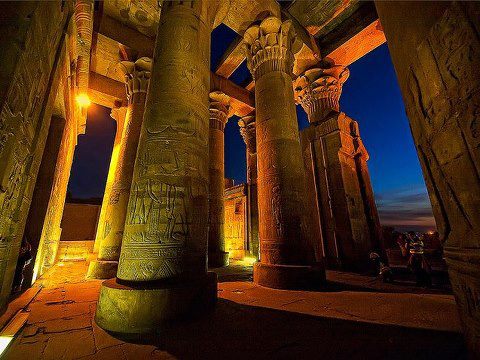Explore Dendera & Hathor Temple Complex
Nestled on the west bank of the Nile River, the Dendera Temple Complex stands as a testament to the grandeur and spiritual significance of ancient Egypt. This remarkable archaeological site is a treasure trove of captivating structures and intricate reliefs that offer a glimpse into the rich mythology and religious beliefs of the Pharaohs. Let's embark on a unique and informative journey through the wonders of the Dendera Temple Complex.
The History and Significance of Dendera Temple Complex
The Dendera Temple Complex has a long and storied history that dates back to the Old Kingdom period of ancient Egypt. However, the main structures that stand today were primarily built during the Ptolemaic and Roman eras. The complex is dedicated to the goddess Hathor, who was revered as the deity of love, beauty, music, and motherhood.
Exploring the Architectural Marvels
The centerpiece of the Dendera Temple Complex is the Temple of Hathor, a magnificent structure characterized by its impressive columns, elaborate reliefs, and beautifully decorated ceilings. The grand entrance, known as the Dendera Zodiac, is a celestial map that depicts the constellations and celestial bodies, offering insights into the ancient Egyptians' astronomical knowledge. The Hypostyle Hall, adorned with 24 colossal columns featuring intricately carved floral and geometric designs, is another marvel within the complex. The hall was a gathering place for religious ceremonies and rituals, where worshippers sought the blessings of Hathor.
Divine Reliefs and Sacred Chambers
One of the highlights of the Dendera Temple Complex is the famous Relief of Cleopatra VII and her son Caesarion. This intricate carving depicts the queen and her son offering homage to the goddess Hathor, showcasing the close relationship between the ruling monarchs and the divine deities. Within the complex, visitors can also explore the Sacred Lake, which served as a place of purification and ritualistic bathing. The surrounding chapels and smaller temples dedicated to various deities further enhance the spiritual atmosphere of the site.
Symbolism and Mythology
The reliefs and inscriptions found throughout the Dendera Temple Complex provide valuable insights into ancient Egyptian mythology. The story of the birth of the divine child, known as the "Dendera Light," is depicted on the walls, symbolizing the rebirth of the sun god Ra and the eternal cycle of life. The mythological themes extend to the crypts and hidden chambers within the complex. These sacred spaces were believed to be portals to the underworld, where rituals and offerings were conducted to ensure the souls of the deceased could pass into the afterlife.
The Mysteries and Controversies
The Dendera Temple Complex continues to intrigue scholars and enthusiasts with its enigmatic features. The depiction of the "Dendera Light Bulbs" has sparked debates about the ancient Egyptians' knowledge of electricity and advanced technologies. Some interpret these carvings as symbolic representations, while others propose alternative theories.
The Restoration and Conservation Efforts
Over the centuries, the Dendera Temple Complex has faced the effects of time, natural disasters, and human interference. However, ongoing restoration and conservation efforts have ensured the preservation of this remarkable site. Dedicated teams of archaeologists, historians, and conservationists work tirelessly to protect the delicate reliefs, repair damaged structures, and provide visitors with an unforgettable experience.
Visiting the Dendera Temple Complex
Located approximately 60 kilometers north of Luxor, the Dendera Temple Complex is easily accessible by road or river. Guided tours are available from Luxor and other nearby cities, providing a comprehensive understanding of the complex's history and significance.
Exploring the Dendera Temple Complex is a journey through time, immersing visitors in the mystical world of ancient Egyptian mythology. From the awe-inspiring architecture to the intricate reliefs and sacred chambers, every corner of the complex tells a story and offers a glimpse into the religious and cultural practices of the past.
Egypt Tours Including Dendera Temple Complex
| Tour | Itinerary | Price |
|---|---|---|
| Sonesta Amirat Dahabiya | 8 Days | Inquire |
| Jaz Crown Jubilee | 4-5 Days | $ 765 |
| Iberotel Crown Empress | 4-5 Days | $ 765 |
| Ms Esplanade Nile Cruise | 4-5 Days | $ 825 |
| Nile Goddess | 4-5 Days | $ 899 |
| Ms Salacia Nile Cruise | 4-5 Days | $ 945 |
| Ms Tosca Nile Cruise | 4-5 Days | $ 975 |
| Nuun and Nuut Dahabiya | 4 Days | $ 1046 |
| Wheelchair Accessible Nile Cruise | 4-5 Days | $ 1145 |
| Ms Darakum Nile Cruise | 4-5 Days | $ 1250 |
